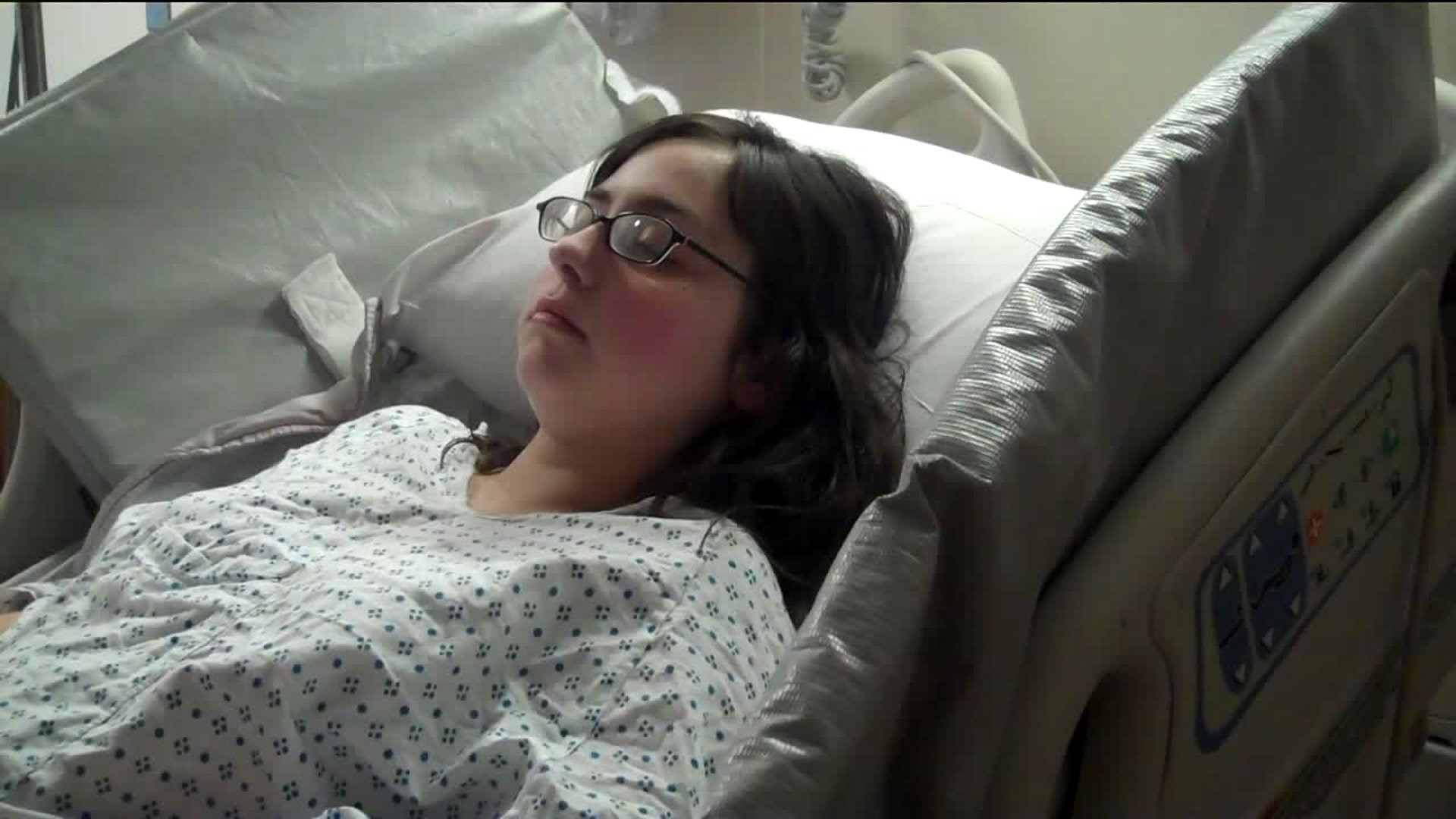LACKAWANNA COUNTY -- Emily Gavigan is a Scranton Prep grad, a Laflin native, a young woman who, before she got sick, dealt with nothing more than a bit of minor anxiety.
Emily was 19 and doing well, a sophomore at the University of Scranton when she suddenly became what she describes as "energetic and buzzy."
"We were home from Christmas break, and I was at a coffee shop with my friend. When I got up to leave, all of a sudden, I was manic and paranoid, and I thought these trucks were following me," she recalled.
Emily got in her car to drive home and couldn't shake the feeling. Convinced she was being followed, she went to her grandparents' house instead.
"They called us and we went down to their house, and she was curled up on the couch. She was very afraid," said Emily's mother Grace Gavigan.
"I was in this, like, heightened state, watching my back, where are they, looking in my rearview mirror, just totally not myself," Emily added.
Emily's mom called a psychiatrist and made an appointment for her the next day.
"When we went to her office, it was a brand new space, white paint on the walls, no furnishings, and it was a Saturday. And I was like, there's definitely cameras in here, and they're listening to me, and I can't talk to you," said Emily.
Grace and her husband Bill had no idea what was happening to their only child.
"Was she drinking? Was she taking some type of drug?" Grace wondered. "Our world changed in like a weekend."
Emily ended up spending five weeks in two different trips at a psychiatric ward. She was given drug after drug, but she didn't get better.
"Everybody's saying I'm crazy. I guess that's what's happening."
She went back to school and did the best she could until about a year later when the physical symptoms began: Emily was having trouble speaking and walking and couldn't properly use her hands.
She ended up in the emergency room and Dr. Mitchell Gross was there.
"There's a puzzle, and we have this black box we call a brain, and we're looking for what the symptoms represent, and what the underlying problem is," Dr. Gross explained.
Dr. Gross is a neurologist at Geisinger Wyoming Valley Medical Center. He first suspected Emily's issues weren't psychiatric, but auto-immune. And that's when Emily's dad shared an article with him.
"My husband had that article, handed it to Dr. Gross, and said, 'I want her tested for this,'" Grace said.
The article was written by Susannah Cahalan, a New York Post reporter who wrote a book called "Brain on Fire: My Month of Madness" detailing many of the same symptoms Emily was having.
Dr. Gross was open to the idea that Emily had the same illness -- NMDA receptor autoimmune encephalitis.
"It turns out what she had had only recently been talked about in literature, 2007, 2008, when the disease was first described," said Dr. Gross. "I would love to say we figured the whole case out and made her all better by ourselves, but we're fortunate we had (the University of Pennsylvania) nearby."
Emily was flown to the University of Pennsylvania Health System a few days later.
By this point, she was very sick. She'd developed a blood clot in her brain and was having seizures. She spent months there recovering.
It was in Philadelphia where Emily was officially diagnosed with NMDA receptor autoimmune encephalitis. That happens when antibodies produced by the body's own immune system attack NMDA receptors in the brain. They are what control electrical impulses and their functions are critical for judgment, perception of reality, and human interaction, among others.
Once doctors were able to put a name on what Emily had, they could treat it, using a drug to suppress parts of her immune system.
"It's not a common disease. It will hopefully never be a common disease, but it's one we have to put on our radar and keep in the back of our minds when we have the right scenario," said Dr. Gross. "I even have to wonder if some of the patients we decide have Alzheimer's disease might have some variation of this."
After several rounds of medication and therapy, Emily's parents brought her home.
Grace says it took a while for her daughter's personality to come back completely, but it has now.
As for Emily? She's 28 years old, lives in the Poconos and works for a pharmaceutical company.
She's eager to tell people what happened to her because she knows someone out there needs to hear it.
"I've seen the power of how important sharing your story is. I was saved because Susannah shared her story, without a doubt," Emily said.
Emily and her family want to share what they say is a good resource for those wanting to learn more about autoimmune encephalitis, aealliance.org.

